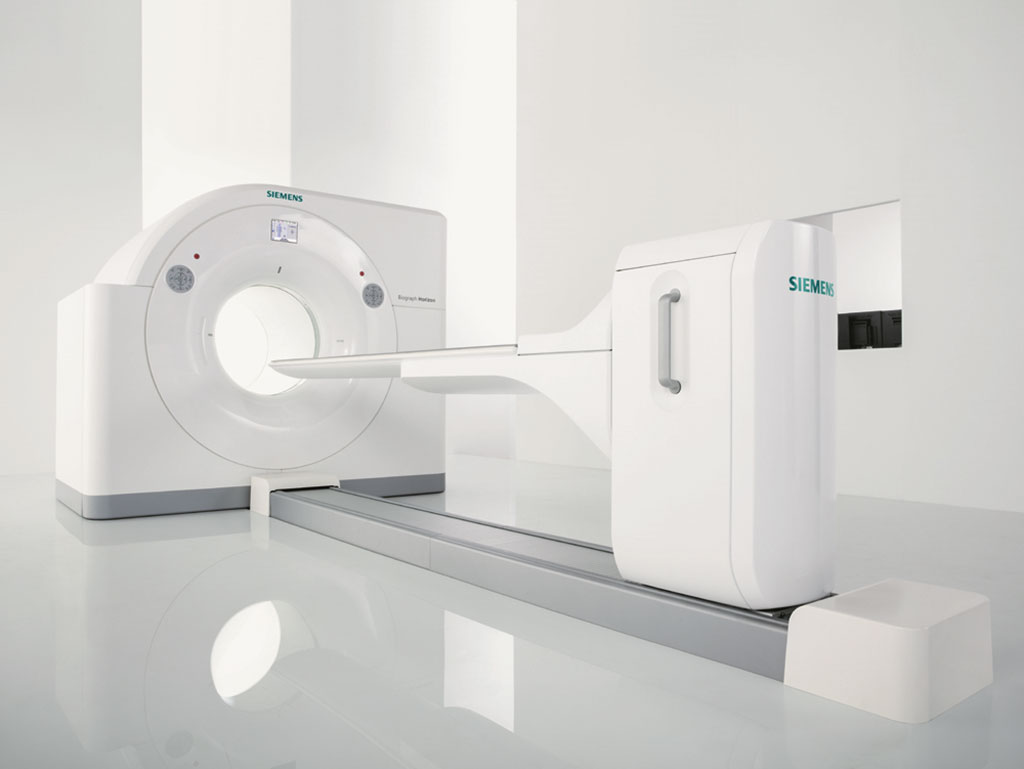Molecular Imaging Transforms Prostate Cancer Management
By MedImaging International staff writers
Posted on 02 Apr 2020
Prostate-specific membrane antigen (PSMA) positron emission tomography computed tomography (PET-CT) improves prostate cancer staging accuracy, claims a new study.Posted on 02 Apr 2020
Researchers at the University of Melbourne (UNIMELB; Melbourne, Australia), the University of Western Australia (UWA; Crawley, Australia), and other institutions conducted a study involving 300 men at ten sites across Australia diagnosed with prostate cancer and deemed to be at high risk. The men were randomly assigned to receive either conventional CT and bone scans (152 patients) or PSMA-PET/CT (148 patients). The CT produces detailed body images, while the PET scan detects areas where PSMA is present at high levels, indicating the presence of prostate cancer cells.

Image: The Siemens Healthineers Biograph Horizon PET/CT (Photo courtesy of Siemens Healthineers)
The results showed that PSMA-PET/CT scans were much more accurate (92%) than conventional CT and bone scans (65%) at detecting cancer spread. Conventional imaging failed to detect cancer spread in 29 patients, giving a false negative result. By comparison, PSMA-PET/CT gave false negative results in just six patients; furthermore, fewer men had false positive results. While both imaging techniques involved radiation exposure, the dose associated with PSMA-PET/CT was less than half (8.4mSv) of conventional imaging (19.2mSv).
In addition, PSMA-PET/CT scans had greater impact on the way the patients' disease was managed, with 28% having their treatment plans changed following scans, compared with 15% following conventional imaging. And when PSMA-PET/CT was introduced at the second round of imaging (after conventional imaging), disease management plans were still changed in 27% of cases, but when conventional imaging was used at the second round, however, just 5% of patients had their treatment plans changed. The study was published on March 20, 2020, in The Lancet.
“Taken together, our findings indicate that PSMA-PET/CT scans offer greater accuracy than conventional imaging and can better inform treatment decisions,” said lead author Professor Michael Hofman, MBBS, of the Peter MacCallum Cancer Centre at UNIMELB. “We recommend that clinical guidelines should be updated to include PSMA PET/CT as part of the diagnostic pathway for men with high risk prostate cancer.”
PET is a nuclear medicine imaging technique that produces a three dimensional (3D) image of functional processes in the body. The system detects pairs of gamma rays emitted indirectly by a positron-emitting radionuclide tracer. Tracer concentrations within the body are then reconstructed in 3D by computer analysis. In modern PET-CT scanners, 3D imaging is often accomplished with the aid of a CT X-ray scan performed on the patient during the same session, in the same machine.
Related Links:
University of Melbourne
University of Western Australia














